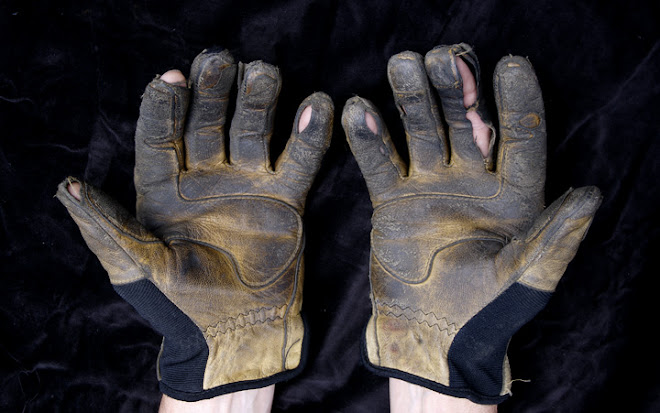Is this progress?
Getting a multi-camera show up and running from a dead-start -- a cinematic barn-raising that begins amid clouds of sawdust, paint fumes, and constant yelling -- doesn’t really end until the first one-week hiatus arrives, usually after the third episode is in the can. By then the lighting on the permanent sets is pretty much dialed-in, and the bulk of our work from that point on involves a bit of tweaking to meet the needs of each new episode, hanging an occasional “special,” and the usual routine of rigging, lighting, and wrapping the swing-sets.*
“Redford's age is integral to the film's effectiveness. He is 77, probably 76 at the time of filming, and though he is by no means your grandfather's 76, he can't be mistaken for a young man. And so all the physical things he must do - drag himself through water, climb, pull things up, lift himself out - are an effort. What a 30-year-old might do spontaneously, he must think about, and position himself properly, and consciously apply his strength with precision and no wasted effort. Thus, we feel his strain, and our involvement becomes much more intense than if we were watching, say, Channing Tatum.”
I’m more than ten years from Redford’s age, but underlined sentence in that passage resonated deep within, accurately describing the mental and physical process I go through prior to each and every action when hanging and powering lamps up on the pipe grid, and never so much as on this rig.
This caused me to wonder -- did the work actually get harder since the last time around, or am I simply wearing down to the point where it just feels that way? Truth be told, I'm not sure there’s a good answer to that question.
I’m more than ten years from Redford’s age, but underlined sentence in that passage resonated deep within, accurately describing the mental and physical process I go through prior to each and every action when hanging and powering lamps up on the pipe grid, and never so much as on this rig.
This caused me to wonder -- did the work actually get harder since the last time around, or am I simply wearing down to the point where it just feels that way? Truth be told, I'm not sure there’s a good answer to that question.
Still, there was an X factor on this rig: forty brand new LED BriteShot lamps to replace the 5Ks and many of the 2K tungsten heads we used last season. The LED units are more compact than the old Studio 5K’s, but as usual in Hollywood, appearances are deceptive. At around 40 pounds each (about as much as a five gallon bottle of water), these are heavy units to wrangle up in a man-lift. Getting those pigs hung and powered was only half the battle -- at that point we had to daisy-chain DMX cables connecting the lamps back to opti-splitters linked to the dimmer system, then individually address each head using a keypad mounted on the back of the lamp.
I shit you not -- a fucking keypad on the back of a motion picture lamp. The old guys I came up must be spinning in their graves at this. Me, I get dizzy just thinking about it.
He's have us put a single in, take the single out, then five minutes later, put it back in again -- which is how he earned the nickname "The O.C.D.P." a long time ago.**
* A "special" is a lamp set to illuminate a particular actor in a very specific position on set for a given scene in that week's show -- a light that may or may not be used again over the rest of the season. "Swing sets" are sets put in for a new episode, then taken out after filming is complete.
** A "single" is a circular metal scrim used to reduce the output of a lamp by half a stop. A double scrim cuts the light by a full stop.




No comments:
Post a Comment